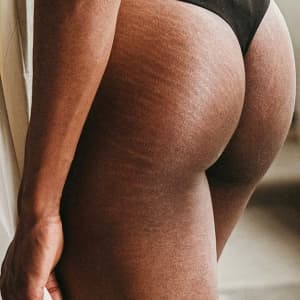 Abdominoplasty
AbdominoplastyThe Ultimate Guide To Massage Techniques And Etiquette
From which service to book to how much to tip, we’re breaking down everything you need to know about professional massage services.
You’re ready to treat yourself to a massage (yay!), but are you at a loss for what comes next? You’re not alone. Whether you are trying to make heads or tails of the massage service menu or are curious about how much to tip, there is a lot to make sense of before heading in for that much deserved rest and relaxation. To better understand the ins and outs of massage techniques and etiquette, we went straight to the experts. Read on for pro tips that are sure to make your next spa experience a serene and successful one.
Massage Techniques 101
Hot stone. Swedish. Deep tissue. Lymphatic. You’ve likely heard of some (or all) of these massage therapies. So, how do you decide which one is best for you? To ease your nerves while deciphering spa menus, we’ve compiled an overview of some of the most popular massage techniques, so you know exactly what you can expect from the service.
Swedish Massage
Great for relieving muscle tension, inducing relaxation, boosting circulation, and stimulating nerve endings, Ben To, a massage therapist at Penelope & The Beauty Bar in Seattle, calls the Swedish massage a “classic.” “We use a lot of long strokes, kneading, and some passive joint manipulation,” he says. “It’s gentler and more relaxing than a deep tissue.”
Hot Stone Massage
Another classic, hot stone massage incorporates the use of heated stones into a traditional Swedish massage, explains Tia Bufanda, master massage therapist at Seattle’s Le SPA de l’hôtel LOTTE. Expect long sweeping strokes with both hands (or fists, forearms, etc.) and hot stones to alleviate pain and warm the muscles. She says it’s “perfect on a cold winter day!”
Aromatherapy Massage
Like a hot stone massage, an aromatherapy massage is a take on a Swedish massage. In this technique, the massage therapist uses aromatic skincare and essential oils (think: lavender, chamomile, eucalyptus, rose) for a zen effect.
Deep Tissue Massage
The deep tissue technique is similar to a Swedish massage, though it targets the deepest layers of muscle tissue, tendons, and fascia. “We’ll use some of the same techniques as in Swedish, but, as we gradually increase the pressure and work through the different layers of muscle, we’ll add forearms and elbows to get deep into the tissue,” To shares.
Lymphatic Massage
A lymphatic drainage massage is ideal for those looking for a detox. “If you have swelling, edema, or some water retention in certain areas, this technique is meant to encourage excess fluid within the body to enter the lymphatic capillaries to form lymph,” To explains. For this reason, lymphatic massages are often recommended as part of recovery protocols for cosmetic procedures like liposuction, tummy tucks, arm lifts, thigh lifts, and Brazilian butt lifts. “It’s a very light touch with small J-strokes,” he shares. “Because it’s such a light touch, we typically incorporate regular massage into our lymphatic services here at the spa.”
Lomi Lomi Massage
A traditional Hawaiian massage, Lomi Lomi employs long continuous strokes for a heavy dose of calm. Bufanda says you can expect the therapist to use their forearms frequently and move from the top of the shoulders to the tips of the toes. “It is a lovely full-body experience that leaves the client feeling extremely relaxed,” she notes.
Shiatsu Massage
A therapeutic form of massage from Japan, shiatsu massage relies heavily on finger pressure to concentrate on certain energy pathways or meridians. With roots in Traditional Chinese Medicine (TCM), therapists seek to facilitate healing by promoting a healthy flow of chi (read: energy) throughout the body. It is usually performed on the floor or on a low massage table, and, while various pressure points are stimulated during treatment, the massage is not meant to be uncomfortable.
Sports Massage
Therapeutic sports massages come in different forms depending on the reason for treatment. “An ‘event’ massage is typically clothed, uses a lot of compressions and stretching, takes place at marathons and other sporting events, and is perfect for an athlete's warm up and cool down,” Bufanda explains. For athletes looking for longer-term benefits, a ‘maintenance’ sports massage may be in order. “It uses deeper techniques that really engage and stretch the connective tissue,” she says, adding that it is meant “to support an athlete's ongoing training or injury treatment.”
Prenatal Massage
As the name implies, a prenatal massage is designed for women who are pregnant. According to Bufanda, the difference between a prenatal massage and most other massage treatments is the positioning of the client and the amount of pressure applied. “We change our technique in areas, like the insides of the legs, to light strokes in order to keep baby and mother safe,” she explains.
At LOTTE Spa, they recommend waiting until the second trimester for a massage. “Depending on how far along the client is, we typically position the client on their side, with lots of cozy pillows for optimal comfort,” she shares. “We generally see pregnant clients that are experiencing lower back pain, hip pain, or are looking for overall relief and relaxation from all of the hard work their body is doing!”
Reflexology
Unlike the other types of massages we’ve covered, reflexology is not a full-body treatment. Instead, massage therapists or reflexologists focus on specific areas — like the feet, hands, and ears — and apply different amounts of pressure to improve both physical and mental health. Depending on the spa, this can be a standalone service or an add-on to other treatments.
A Brief Guide to Massage Etiquette
Now that you know which type of massage to book, we want you to feel comfortable and confident both on and off the table. How can you ensure you are a model client and receive the best treatment for your needs? To and Bufanda says there’s not actually a whole lot to do (above all, they want their clients to be relaxed and enjoy themselves), but here are their tips for everything from showing up on time to showing appreciation when you leave.
1. Arrive On Time
When asked for their single most important etiquette tip, both To and Bufanda have the same answer: punctuality. “We’ll always try to accommodate and move an appointment if possible, but, on a busy day, there’s not a lot of flexibility in the schedule,” To explains. In such cases, he says the service will have to end at the scheduled time regardless of when the client arrived. Rather than planning to show up at the time of your appointment, Bufanda recommends coming in at least 15 minutes early. That way, you can fill out paperwork, use the restroom, and take advantage of any other relaxing amenities prior to your treatment!
2. Shower First, Shave Later
Bufanda says it is appreciated when a client is able to shower beforehand, though she is quick to note that massage therapists know that isn't always possible — and “that's totally okay!” As for whether or not you should shave first, don’t reach for your razor on her account. “We never care whether or not a client has shaved,” she says. “We are more concerned with their muscles.”
3. Feel Free to Take It All Off
When it comes to disobing, what is the proper protocol? “I always tell guests to disrobe at their comfort level, and I explain that they’ll be covered and draped the entire massage,” To shares. “We only uncover the areas we are working on at the moment.” As a male therapist, To says he makes a point to be “very conservative” with his draping technique and to “never massage under clothing that is left on.” In his experience, most people either take everything off or leave their bottoms on.
In the case of undergarments and jewelry, think about what’s going to make for the most relaxing treatment. “Clients should consider what areas they'd like specific work on and if they are okay with getting oil or lotion on their garment or jewelry, as sometimes they can get in the way,” Bufanda says. It’s probably easiest to remove necklaces and earrings, but, at the end of the day, it’s up to you. “Ultimately, client comfort is the priority,” she shares.
4. Don’t Be Afraid to Communicate
Your massage therapist is there to deliver the most enjoyable treatment for each client, which means they are willing to talk as much or as little as you would like to. “It’s their time, so they’re welcome to chit chat or speak as much as they want,” To says. “I let the guest lead any conversations.”
With that said, communication — especially if it’s about certain target areas or pressure — is the key to maximizing your experience. “In order to get the most out of a massage, clients should definitely feel empowered to ask for what they need, whether that means a pressure adjustment, spending a little extra time somewhere, or skipping an area all together,” Bufanda notes. In her opinion, there is no such thing as being “too vocal,” for “this is ultimately the client's massage.”
One thing to keep in mind about pressure: While clients have every right to ask for as much or as little pressure their therapist is capable of giving, those “looking for extremely deep pressure should know that their tissue will need to be warmed up first using lighter techniques and progressing into deep pressure in order to prevent damaging the tissue,” Bufanda shares.
5. Gratuity = Gratitude
If you’re like us, your number one question is: How much should you really be tipping? Our experts agree that 18 to 20 percent gratuity is standard for spa massages — “but it is always the client's choice for how much they'd like to leave,” Bufanda says. She does note, however, that you need to consider your setting. Medical clinics and/or chiropractors' offices often don’t accept tips because the massage is being billed to the client’s insurance. When in doubt, inquire about the gratuity policy when you book your appointment.
How to Maximize Your Massage
Needless to say, massages can do wonders for your mental and physical wellbeing, but did you know you can actually extend the benefits post-treatment? To keep the rest and relaxation going, consider the following:
- Take an Epsom Salt Bath: Post-massage, To recommends taking an epsom salt bath to further relieve any stress and tension and proactively counteract soreness. This is particularly useful after a deep tissue massage.
- Stay Hydrated: Ever wonder why massage therapists offer water after a massage? It actually helps flush the toxins released during the treatment. But not just any beverage will do. To says to avoid caffeine, as it can be counterproductive to what you just did in the massage.
- Book Another Treatment: “Massage is more than just a luxury, it is healthcare and should be done more than just once a year,” Bufanda says. Need more convincing? “Massage is like exercise, your muscles need it on a regular basis so you can move through life feeling balanced,” she explains. It’s called ‘massage therapy’ for a reason, right?!
The Takeaway
At the end of the day, it’s your massage. Be as communicative as possible when it comes to sharing what you want (or, just as importantly, what you don’t want), and feel free to ask for guidance prior to booking your appointment to help select the best service for your needs. In terms of etiquette, be punctual and respectful and let your massage therapist take care of the rest.
More Related Articles
Related Procedures

AI Plastic Surgeon™
powered by'Try on' aesthetic procedures and instantly visualize possible results with The AI Plastic Surgeon, our patented 3D aesthetic simulator.


